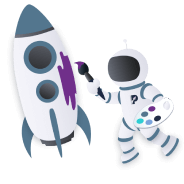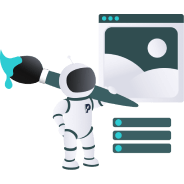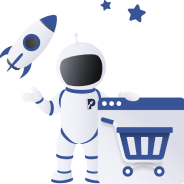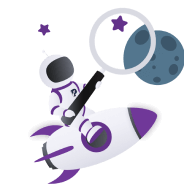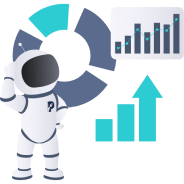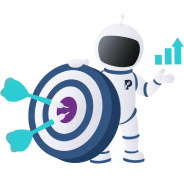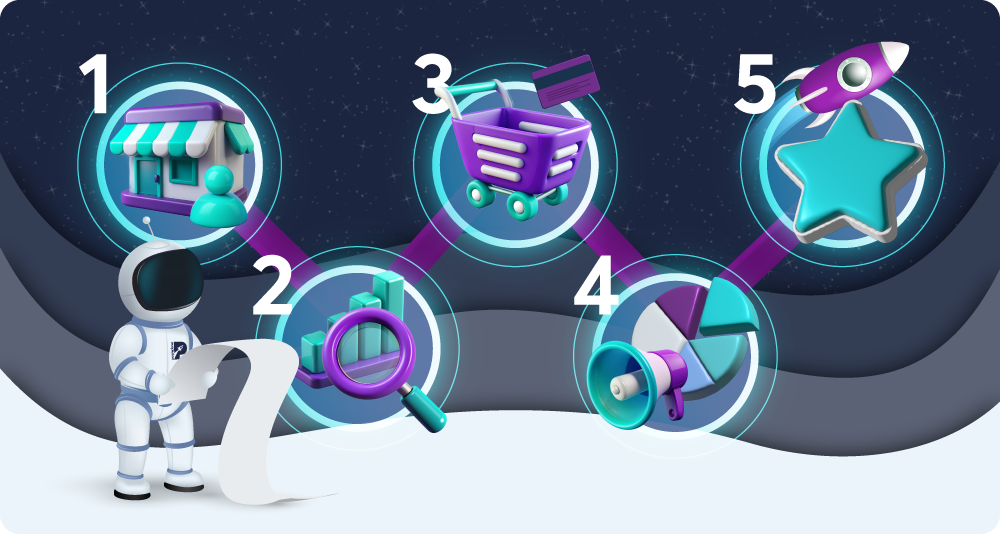

Customer Journey Mapping for Enhancing User Experience
What is customer journey mapping?
Customer journey mapping is a strategic approach used by businesses to visualise the path a customer takes from their initial awareness of a brand to their later decision to make a purchase.
It involves creating a detailed map that outlines every interaction or touchpoint a customer has with a brand, across various channels and platforms, at different stages of their journey. Mapping out customer journeys can also highlight customer thoughts, feelings, and experiences at each point, providing insights into their needs, preferences, and pain points.
The main purpose of customer journey mapping is to put businesses in their customers’ shoes. By understanding the customer’s perspective, companies can identify areas of friction or opportunity, streamline interactions, and tailor their marketing, sales, and support efforts to better meet customer needs. This empathic approach helps businesses to create more seamless, engaging, and personalised customer experiences.
Customer journey mapping also empowers businesses to anticipate customer needs and proactive address them. In this way, customers can feel greater satisfaction and loyalty. Teams inside your business can be better aligned by a common understanding and each touchpoint can be examined and optimised.
Keep reading to learn how you can map your customers’ journeys and optimise their experiences. We’ll also delve into how your marketing efforts can be tailored to each stage of the customer journey (sometimes known as the sales funnel).
How can customer journey mapping enhance user experience?
Customer journey mapping can enhance user experience in several ways, along with numerous other benefits. These benefits can be achieved if businesses are willing to meticulously chart each touchpoint as this is where insights are gained.
One of the paramount benefits of customer journey mapping is its ability to highlight areas where users might encounter friction or obstacles. Identifying these pain points is the first step in transforming potential frustrations into opportunities for enhancement. By smoothing out these bumps in the road, businesses can offer a more seamless and enjoyable experience, significantly boosting customer satisfaction and loyalty.
Furthermore, journey mapping facilitates a deeper understanding of the customer’s needs, desires, and expectations at various stages of their interaction with the brand. This understanding allows for the personalisation of communications, offers, and support, making customers feel valued and understood. Personalisation is a key driver of user experience, fostering a sense of connection between the customer and the brand.
Additionally, by aligning the efforts of different departments around a shared vision of the customer journey, businesses can ensure a consistent and cohesive experience across all touchpoints. This consistency reinforces trust and reliability in the brand, further enhancing the user experience.
How to map your customer journeys
There is so much to be gained from mapping customer journeys but where do you start? Let’s dive into a step-by-step outline to kickstart your project:
1. Understand your objectives
Every successful project begins with understanding its objectives. Starting with a clear vision of what you wish to achieve will help keep your efforts focused. Here are some potential objectives you may have:
- Enhance the overall customer experience.
- Increase engagement on a specific platform.
- Reduce customer complaints about a particular service.
- Increase sales from new and existing customers.
- Reduce the number of abandoned carts.
Whatever you’re starting with, make sure your objectives are specific and measurable. For example, do you want to increase sales by 5% or 10%? How much more engagement do you want to see from a specific platform?
Defining goals clearly means your project will be focused on its efforts and you’ll know if it has been a success.
2. Collect customer data
Next, it’s time to understand your customers’ experiences. This means collecting a significant amount of data on their interactions with your brand. This involves collecting:
- Quantitative data from analytics tools – e.g., web traffic, engagement rates).
- Qualitative insights from customer reviews, surveys, and social media comments.
Plus, don’t overlook internal resources like sales teams and customer service logs, as they can provide valuable anecdotes and insights about customer sentiments and common questions or issues.
3. Create your buyer personas
Once you’ve gathered your data, it’s time to synthesise it into a few buyer personas.
These personas should represent different segments of your customer base, including demographic details (age, gender, location), psychographic information (interests, values), and behavioural traits (buying habits, brand interactions).
Each persona should have its own goals and pain points (read our article about buyer personas for more information). What challenges does this segment face in understanding and accessing your product or service? These personas will serve as the foundation for mapping out customised journeys for different segments of your audience.
4. Identify customer touchpoints
Next up, it’s time to understand the ways in which leads and customers interact with your brand. These are called touchpoints. Start by listing all possible customer interactions, from the initial discovery via an online ad, through navigating your website, to post-purchase support.
It’s important to consider both direct interactions (such as making a purchase or contacting customer service) and indirect ones (such as reading reviews or seeing your products on social media). Mapping out these touchpoints in relation to your buyer personas helps you see your brand from the customer’s perspective.
5. Map the customer journey
With your objectives set, data collected, personas created, and touchpoints identified, you can begin to map out the customer journey for each persona.
At this point in the process, you need to visualise the path a customer takes with your brand (and by ‘visualise’ we mean on a spreadsheet or mind map.) Make sure the map covers each stage of the journey (from Awareness, Consideration, and Decision). Do this for new customers and for existing ones.
Document each step in the journey, including what the customer is doing, thinking, and feeling. Use a narrative or storyboard format to depict the journey, highlighting key interactions, channels, problems, and emotions at each stage.
6. Identify meaningful moments
Once your map has been laid out, you can start to identify key and meaningful moments in customer journeys. These are pivotal points that can significantly shape the customer’s perception and relationship with your brand.
Identify these critical interactions by looking for moments that have the highest emotional impact or decision-making importance.
For example, the ease of finding information on your website or the first interaction with customer service can be significant. Understanding these allows you to prioritise improvements in areas that will most significantly enhance the customer experience.
7. Analyse and identify gaps
With the journey map as your guide, scrutinise each stage of the customer’s path to identify gaps between the current customer experience and the ideal one outlined by your objectives.
Look for disconnects in the customer experience, such as expectations not being met, difficulties in navigating your website, or delays in customer service response times. Spot any areas where more marketing is needed – perhaps customers aren’t getting the opportunities to learn about your products.
Another kind of gap may be an opportunity for innovation or differentiation, such as unique ways to enhance the buying process or personalised customer engagement strategies.
8. Develop action plans
For each gap or opportunity you identify, formulate detailed action plans that outline the steps needed to address these issues.
This might involve redesigning certain touchpoints, creating an informative blog strategy, introducing new communication channels, implementing customer feedback mechanisms, or crafting entirely new marketing efforts.
Ensure that each action plan is assigned to specific teams or individuals, with clear timelines and metrics for success. This step will take the insights from your journey mapping and turn them into more concrete plans for the future.
Marketing at each stage of the customer lifecycle
Stage 1: Awareness
Awareness is the initial phase where potential customers first become aware of your brand, product, or service. They might discover you through advertising, social media, word of mouth, or by searching for solutions to their problems online. During the awareness stage, the goal for businesses is to make a strong first impression, educate the audience about what they offer, and establish themselves as a potential solution to the customer’s needs.
In terms of marketing at this stage, businesses should focus on creating visibility and intrigue. For a retail brand, for example, this could involve leveraging social media advertising with visually appealing content showcasing their products in lifestyle settings, aimed at sparking interest among potential new customers.
Small businesses might utilise local SEO strategies and community engagement (e.g., local events sponsorship) to draw attention. In contrast, larger businesses could deploy broader digital marketing campaigns, using influencer partnerships and targeted online ads to reach a wider audience.
The key to successful marketing at this stage is crafting compelling, attention-grabbing messages that resonate with the target demographic’s interests and needs, encouraging them to learn more about the brand.
Stage 2: Consideration
At the Consideration stage, potential customers are aware of your business and are considering whether your product or service is the right solution for their problem. They are comparing their options, looking at reviews, and diving deeper into what sets your offering apart from competitors.
The focus for businesses during the consideration stage is to provide detailed and helpful information, showcase value, and address any concerns or questions that may arise, helping guide the customer towards making a purchase decision.
For a SaaS company, for example, this might involve creating detailed comparison guides, hosting webinars that demonstrate product features, and offering free trials or demos to allow prospects to experience the service first-hand.
A small SaaS company could focus on personalised outreach, such as engaging directly with potential customers through email sequences that highlight use cases relevant to the prospect’s industry. Larger companies, on the other hand, might invest in comprehensive content marketing strategies, including SEO-optimised articles, case studies, and customer testimonials to build credibility and authority at scale.
The objective is to provide enough information and confidence-building experiences to move prospects closer to making a purchase.
Stage 3: Decision
When leads reach the Decision phase, they’ve researched their options, considered the alternatives, and have made a decision about which product or service is best for their needs.
To ensure that the decision is your offering, your marketing at this stage must close the deal. This means persuasive CTAs and incentives. Make sure your email marketing is set up to reach out to abandoned carts, as these leads can be persuaded. Your abandoned cart emails will be made more compelling if they contain limited-time discount codes.
Small businesses might adopt a more hands-on approach to marketing at this stage, such as personal consultations or live chat support to answer any last-minute questions and build a rapport that nudges the prospect over the line. Larger businesses, leveraging their resources, could implement dynamic retargeting ads that remind prospects of the products they viewed, along with special offers or benefits like free shipping or a gift with purchase to clinch the deal.
The goal at this stage is to remove any remaining obstacles to purchase, making it as easy and attractive as possible for the customer to make a purchase.
Stage 4: Repeat
Once customers have bought with you once, it’s much easier to nurture them again. While you have a 5-20% chance of selling to new customers, you have a 60-70% chance with existing customers. So, it’s worth investing marketing spend into retention and restarting the customer lifecycle all over again.
To repeat the customer journey, your marketing must focus on loyalty, support, and personalisation. Approaches like offering personalised recommendations, rewards, or loyalty programs can be very effective. You might like to go the extra mile and offer discounts on a customer’s birthday.
Automated email marketing campaigns that re-engage customers are essential – highlighting new arrivals, bestsellers, or end-of-season sales.
Final thoughts
Mapping the journeys your customers take will reveal several things. It will expose operational and customer service problems, but it will show you many opportunities for improvement. By being imaginative, meticulous with your analysis, and keeping your business goals in mind, you can discover several ways to enhance your customers’ experiences.
If you want a fresh new approach to build strong and lasting relationships with customers, foster brand loyalty, and drive repeat business, customer journey mapping is the perfect option.


